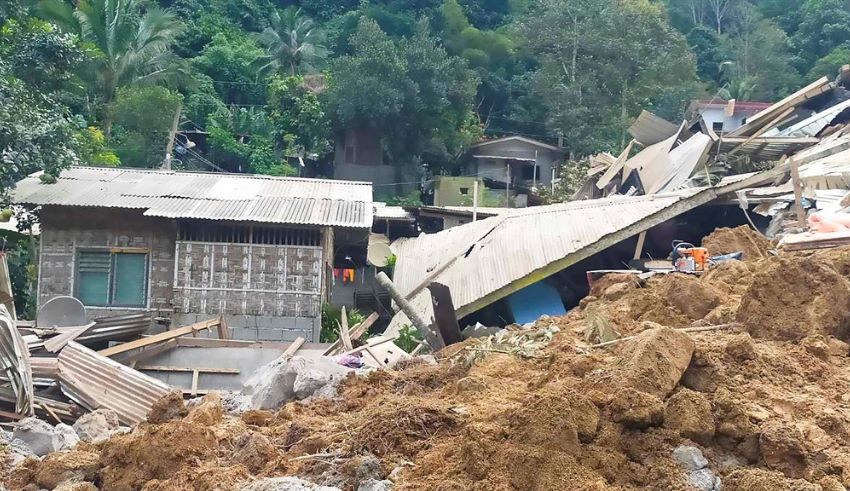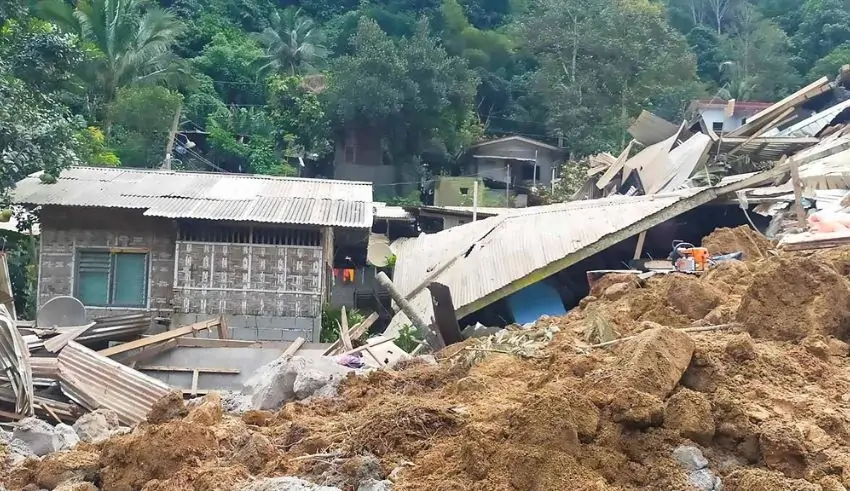

(C) News24
On the night of February 7, 2024, a massive landslide struck the gold-mining village of Masara in Maco town, Davao de Oro province, Philippines, burying hundreds of people and vehicles under tons of mud and debris.
The disaster, triggered by weeks of heavy rain and exacerbated by the unstable soil and deforestation in the area, claimed at least 54 lives and left 63 others missing, according to the latest official report. The landslide also destroyed dozens of houses and infrastructure, and disrupted the livelihood and economy of the community.
The rescue and recovery efforts were hampered by the difficult and dangerous conditions, such as the limited access and visibility, the unstable terrain and weather, and the risk of more landslides. The local authorities and agencies, supported by the national government and the international organizations, mobilized thousands of personnel and equipment, such as soldiers, police, firefighters, volunteers, excavators, and drones, to search for survivors and retrieve bodies from the rubble. The rescue and recovery efforts were also guided by the use of biometric verification, GPS, and CCTV, to identify and locate the victims and the vehicles.
Among the few miracles and stories of survival, one of the most remarkable was that of a three-year-old girl, who was pulled alive from under the rubble on Friday, after being trapped for more than two days. The girl, who suffered only minor injuries, was reunited with her mother, who had also survived the landslide.
The relief and rehabilitation efforts were focused on providing the immediate and long-term needs and assistance to the affected population, such as food, water, shelter, medicine, clothing, and counseling. The local authorities and agencies, supported by the national government and the international organizations, established evacuation centers and temporary shelters, where more than 1,000 families were accommodated and served. The relief and rehabilitation efforts were also aided by the donations and contributions from various individuals and groups, such as celebrities, corporations, and NGOs.
The reconstruction and restoration of the village and its infrastructure, such as roads, bridges, power lines, and water systems, were also planned and implemented, with the aim of restoring the normalcy and functionality of the community. The local authorities and agencies, supported by the national government and the international organizations, allocated funds and resources, and employed experts and consultants, to design and execute the reconstruction and restoration projects, with the consideration of the environmental and social impacts and sustainability.
The causes and consequences of the landslide were complex and multifaceted, as they involved various factors and actors, such as the natural and human-induced phenomena, the political and economic interests, and the legal and ethical issues. Some of the causes and consequences of the landslide were:
The tragedy of Masara was a devastating and heartbreaking event that affected the lives and livelihoods of thousands of people in the Philippines. The event also revealed and challenged the various aspects and dimensions of the situation, such as the natural and human-induced phenomena, the political and economic interests, and the legal and ethical issues.
The event also called and inspired the various responses and actions from the stakeholders and actors, such as the rescue and recovery, the relief and rehabilitation, and the reconstruction and restoration. The event also demanded and required the collective and collaborative efforts and cooperation from the local, national, and international levels, to address and overcome the challenges and opportunities of the situation, and to build a better and safer future for the people and the planet.
NextRise 2025-the biggest startup and tech event in Asia-is ready to take place in Seoul on June 26-27 at COEX,…
On this reunion occasion marking 20 years after their debut, the anticipation of the fans seems to be reaching greater…
South Korean boy band RIIZE is returning to Singapore on January 24, 2026 as part of their “RIIZING LOUD” Asia…
Experience Japan’s longest running all-night rock festival, RISING SUN ROCK FESTIVAL 2025 in EZO, with incredible acts, a wealth of…
United States Immigration and Customs Enforcement conducted audits of three Denver cleaning companies, leading to more than $8 million in…
Cricket fans, rejoice! The Olympic Council of Asia (OCA) has confirmed that cricket will be part of the 2026 Asian…
This website uses cookies.
Read More